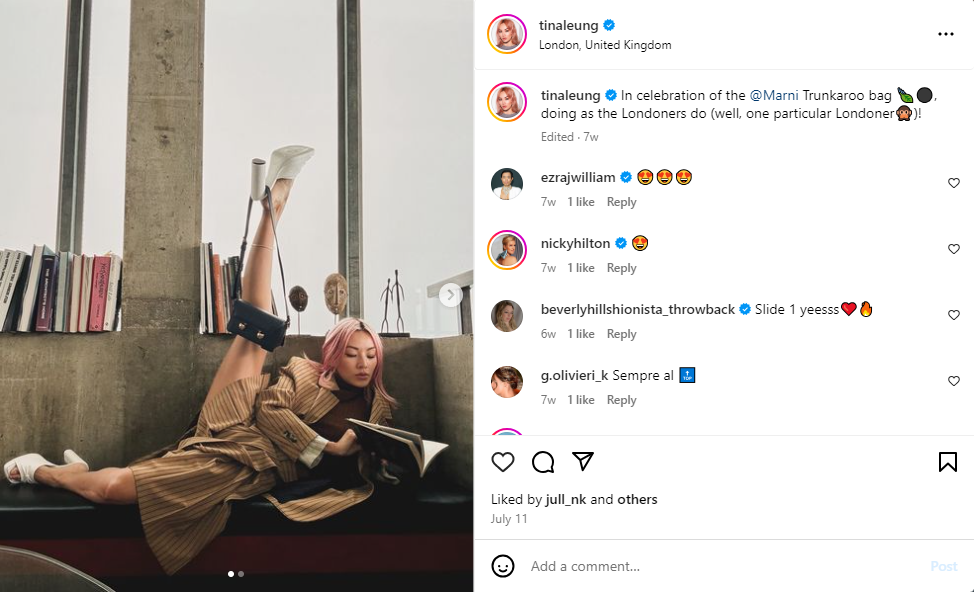Influencers have become dominant in the fashion and commercial industry, shaping trends and consumer behaviour globally. Their ability to connect with audiences through social media has transformed how fashion is marketed, consumed, and perceived.
Let’s discuss the impact of influencers on global fashion trends, including the advantages and disadvantages in-depth.
Impact of Influencers
Seven facts about the impact of Influencers on the global market.
1. Trend Setting and Dissemination
Influencers have become modern digital trendsetters for the fast fashion industry, introducing new styles, brands, and aesthetics for their followers. They rapidly popularise specific looks through platforms like Facebook, Instagram, TikTok, and YouTube, making fashion trends go viral instantaneously. Their influence extends beyond mere fashion choices, as they shape the broader cultural narrative around what is considered stylish in the digital modern era.
2. Brand Collaboration and Influencer Marketing
Luxury Fashion and Mass Market Retailers frequently collaborate with influencers to reach targeted audiences more effectively. These collaborations can range from sponsored posts to exclusive collections and affiliate marketing. Influencers provide authentic endorsements that resonate more with consumers than traditional advertising, enhancing brand visibility and credibility, and sometimes even driving products to sell out quickly after being featured.
3. Democratisation of Fashion
Influencers have played a significant role in democratising fashion by making it more accessible to general consumers. Different influencers attract different audiences; however, some authentic ones often feature a mix of high-end and affordable brands, enabling followers to emulate their styles regardless of budget constraints. This inclusivity has broadened the reach of luxury and commercial fashion trends beyond elite circles, allowing more people to participate in and influence the fashion landscape.
4. Consumer Behaviour and Purchasing Decisions
Influencers significantly impact consumer behaviour by shaping their preferences and driving purchasing decisions. Their recommendations and reviews can lead to increased sales and brand loyalty. The “influencer effect” often results in products selling out in large numbers after being featured, demonstrating their power in the global marketplace. With a direct link between fashion trends and consumer purchasing habits, they are critical players in today’s fashion economy.
5. Cultural Exchange and Diversity
Global influencers bring diverse cultural perspectives to fashion, promoting multiculturalism and inclusivity. This cultural exchange enriches the international fashion landscape by introducing varied styles, traditions, and aesthetics, fostering a more interconnected and diverse industry. Influencers, however, can also homogenise fashion, overshadowing local styles and traditions with more dominant trends.
6. Sustainability Relations with Influencers
Some well-informed and socially responsible influencers advocate for sustainable and ethical fashion practices, raising awareness about environmental and social issues within the fashion industry. Their platforms can drive consumer demand for eco-friendly products and encourage brands to adopt more socially responsible practices. However, the rapid trend cycles driven by mainstream influencers contribute to the rise of fast fashion, encouraging overconsumption and disposable clothing, negatively impacting the environment.
7. Real-time Feedback and Adaptability
Influencers provide immediate audience feedback, enabling brands to evaluate and gauge consumer reactions to their products and campaigns. This real-time interaction allows for swift adjustments and more responsive marketing strategies, making influencers invaluable in the dynamic fashion industry.

Advantages of Influencers
Five advantages of the impact of Influencers on the global market.
1. Enhanced Reach and Engagement
Influencers have large followings, allowing them to reach and engage with vast audiences efficiently. Their ability to interact directly with their followers fosters a sense of community and loyalty, enhancing the effectiveness of their promotional efforts.
2. Authenticity and Trust with Influencers
The generic followers view influencers as relatable and trustworthy sources for fashion advice. They believe the influencers have already tried and tested the product before promoting it on their social accounts. This perceived authenticity and trust make their endorsements more persuasive than traditional advertisements, leading to higher sales and brand conversion rates.
3. Creative Content Creation
Influencers are adept at creating and curating visually appealing and innovative content that showcases fashion in dynamic and inspiring ways. Their creativity can highlight the versatility and potential of different styles, encouraging followers to experiment with their looks.
4. Niche Market Penetration
Influencers often cater to specific niches, allowing brands to target particular demographics effectively. Whether it’s sustainable fashion, streetwear, fast fashion, or luxury attire, influencers can connect brands with their ideal customer base, making them effective marketing channels for both mainstream and niche markets.
5. Accessibility to Global Audiences
The modern digital nature of influencer content allows fashion trends to transcend geographical boundaries, reaching international audiences. This global reach helps fashion brands tap into new markets and connect with consumers from different cultures and regions.
Disadvantages of Influencers
Seven disadvantages of the impact of Influencers on the global market.
1. Promotion of Fast Fashion
The rapid trend cycles driven by influencers contribute to the rise of fast fashion, encouraging overconsumption and disposable clothing. This accelerates waste and has significant negative environmental impacts, as the fashion industry is already a major contributor to global pollution.
2. Lack of Diversity and Representation
Despite some efforts to promote diversity, many influencers still represent a narrow range of beauty standards and body types. This lack of broader representation can perpetuate unrealistic and exclusionary ideals in fashion, which can alienate certain demographics and perpetuate harmful stereotypes.
3. Authenticity Concerns with Mainstream Influencers
As the influencer marketing industry matures, concerns about trust and authenticity arise. Some influencers may prioritise only sponsored content over genuine recommendations, leading to scepticism among followers about their true preferences. This erosion of trust can diminish the effectiveness of influencer marketing over time.
4. Mental Health Implications
Constant exposure to curated and often idealised images of the fashion world can impact the mental health of followers, fostering feelings of inadequacy and low self-esteem. The pressure to emulate influencers’ styles can contribute to anxiety, depression, body image issues, and unhealthy comparisons among consumers.
5. Market Saturation and Competition
The increasing number of influencers creates a saturated market, making it challenging for individual voices to stand out. This competition can dilute the impact of any single influencer and make it harder for niche trends to gain traction. Additionally, the oversaturation of sponsored content can lead to consumer fatigue, making audiences less responsive to influencer marketing and promotions.
6. Ethical and Transparency Issues
Not all influencers adhere to ethical standards regarding disclosures of sponsored content. Lack of knowledge and transparency can erode trust and lead to regulatory scrutiny, potentially harming influencers and brands. Ethical concerns also extend to promoting unsustainable fashion practices and exploiting cultural symbols and local styles without proper recognition or respect.
7. Influencers on Cultural Homogenisation
Global influencers can sometimes promote a homogenised view of fashion, overshadowing local styles and traditions. This dominance can diminish cultural uniqueness and reduce the diversity of global fashion, leading to a more uniform and less vibrant fashion landscape.
Final Thoughts
Influencers have undeniably transformed the international fashion industry, offering significant opportunities and challenges. Their ability to set and disseminate trends, engage with diverse audiences, and create authentic connections has revolutionised how commercial and luxury fashion is marketed and consumed. However, the rise of influencer-driven fashion also brings controversial issues related to sustainability, diversity, authenticity, mental health, and cultural homogenisation. As the industry continues to evolve, brands, influencers, and consumers alike must navigate this landscape thoughtfully, maximising the positive impacts while addressing the drawbacks. By doing so, the fashion industry can continue to innovate and grow in a more inclusive, responsible, and sustainable direction.

